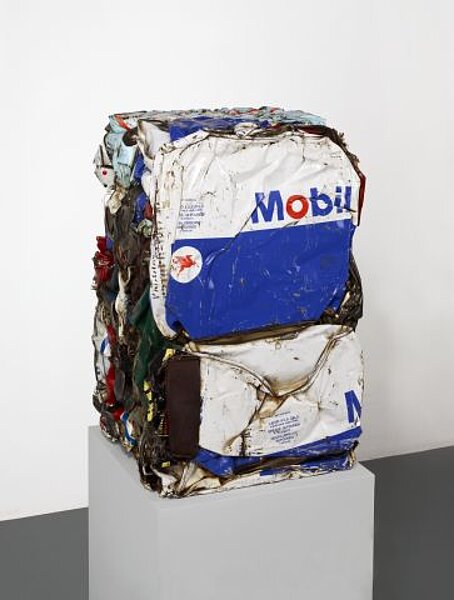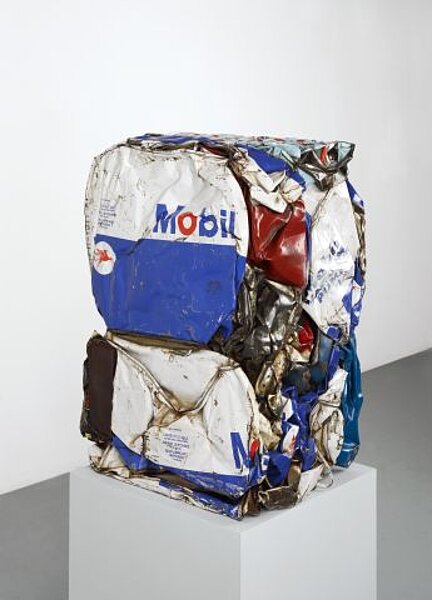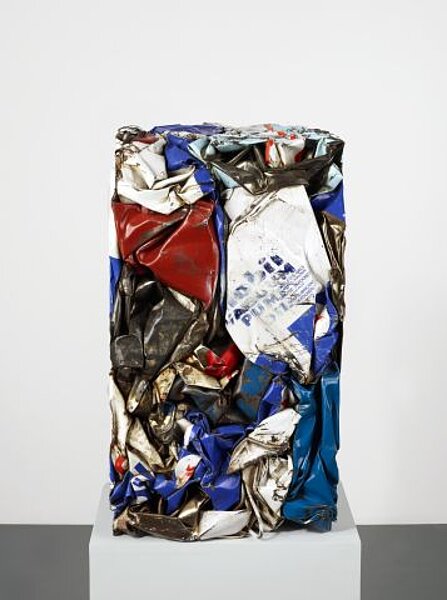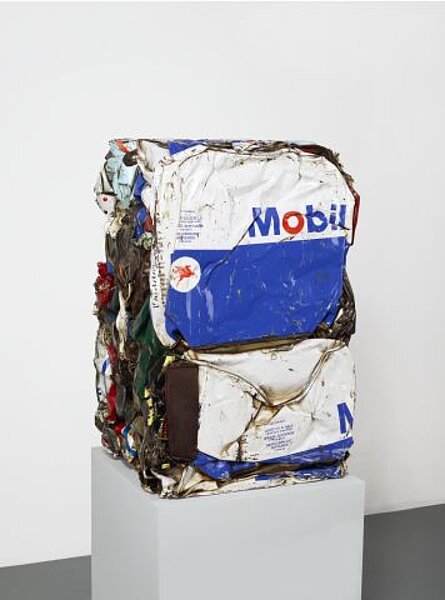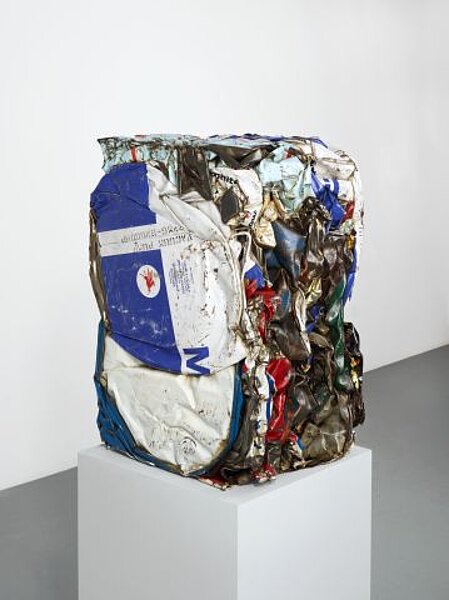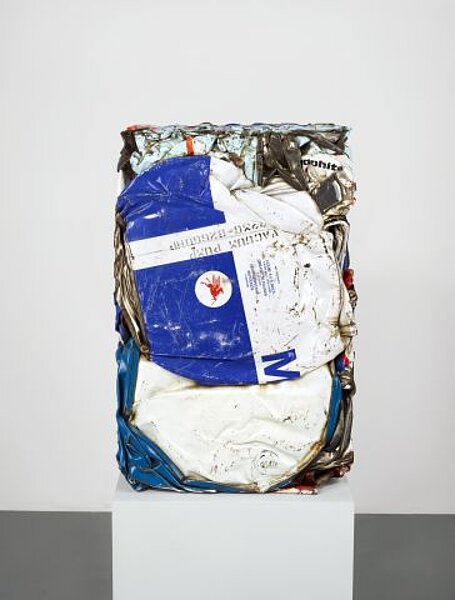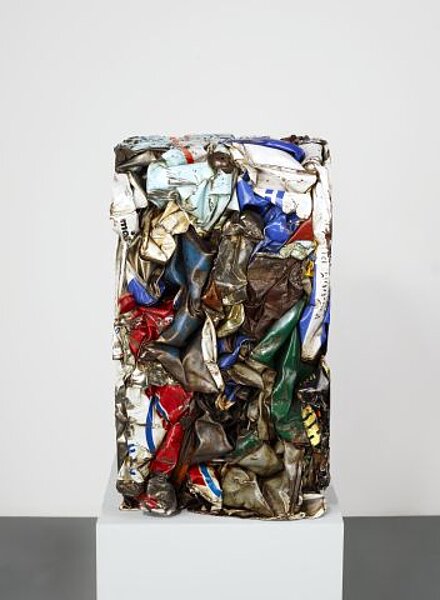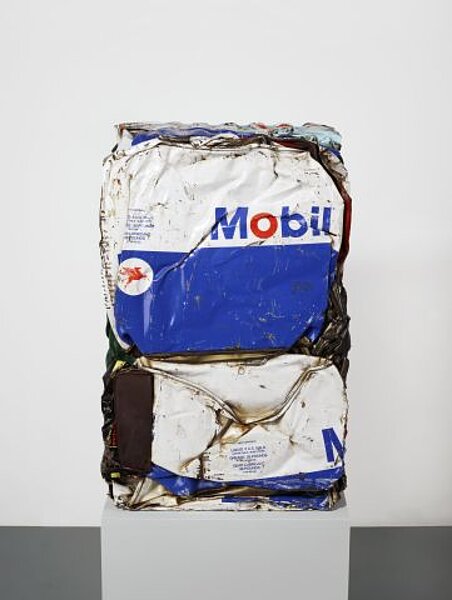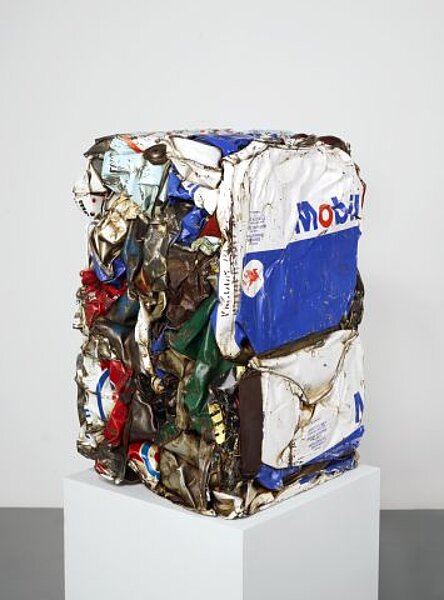
César
Compression Mobil
1960
| Object description | Oil canisters |
|---|---|
| Dimensions |
Objektmaß:
height: 61 cm,
width: 40 cm,
depth: 35 cm
Gewicht:
weight: 150 kg
|
| Year of acquisition | 1978 |
| Inventory number | P 117/0 |
| Creditline | mumok - Museum moderner Kunst Stiftung Ludwig Wien, ehemals Sammlung Hahn, Köln |
| Rights reference | Bildrecht, Wien |
| Further information about the person | César [GND] |
| Literature |
Mimmo Rotella.Roma Parigi New York museum moderner kunst.SAMMLUNG HAHN I Love Pop. Europa-Usa anni '60. Mitologie del quotidiano Nouveau Réalisme. Schwerpunkte der Sammlung Wenn Handlungen Form werden-Ein neuer Realismus in der Kunst seit den fünfziger Jahren New Realisms : 1957 - 1962 : Object Strategies Between Readymade and Spectacle [ ... accompanying an exhibition opening at the Museo Nacional Centro Arte Reina Sofia in Madrid in the spring of 2010] |
In 1960 César Baldaccini, known under the artist’s name César, joined the nouveau réalisme movement led by the art critic Pierre Restany. In their founding declaration this group defined nouveau réalisme as “new ways of perceiving the real.” César had been influenced as an artist by his meetings with Pablo Picasso, Germaine Richier, and Alberto Giacometti, and now had already been working for several years with industrial waste materials and scrap metal, making his “animals made of of scrap,” for example. In 1960 he began the series of works that was to greatly increase international interest, his Compressions dirigées. Using a hydraulic scrap metal press, he shaped pieces of metal or the bodies of cars, using whole car wrecks or, as in this case, Mobil oil cans, and pressing them into workable blocks. César is one of France’s most significant sculptors, and in his later work too he explored the parameters and potential of technology and materials. He discovered polyurethane foam as a material for his art. This begins as a liquid, and then increases greatly in volume and hardens when it comes into contact with air. César’s Expansions are abstract sculptures in amorphous shapes, and they seem to flow and take over space, moving very differently from his Compressions. Today César’s work in the fine arts is in great demand, but he is also renowned in the world of film. France’s national film prize, the César, is named after him, and he designed the trophy.
© mumok – museum moderner kunst stiftung ludwig wien
